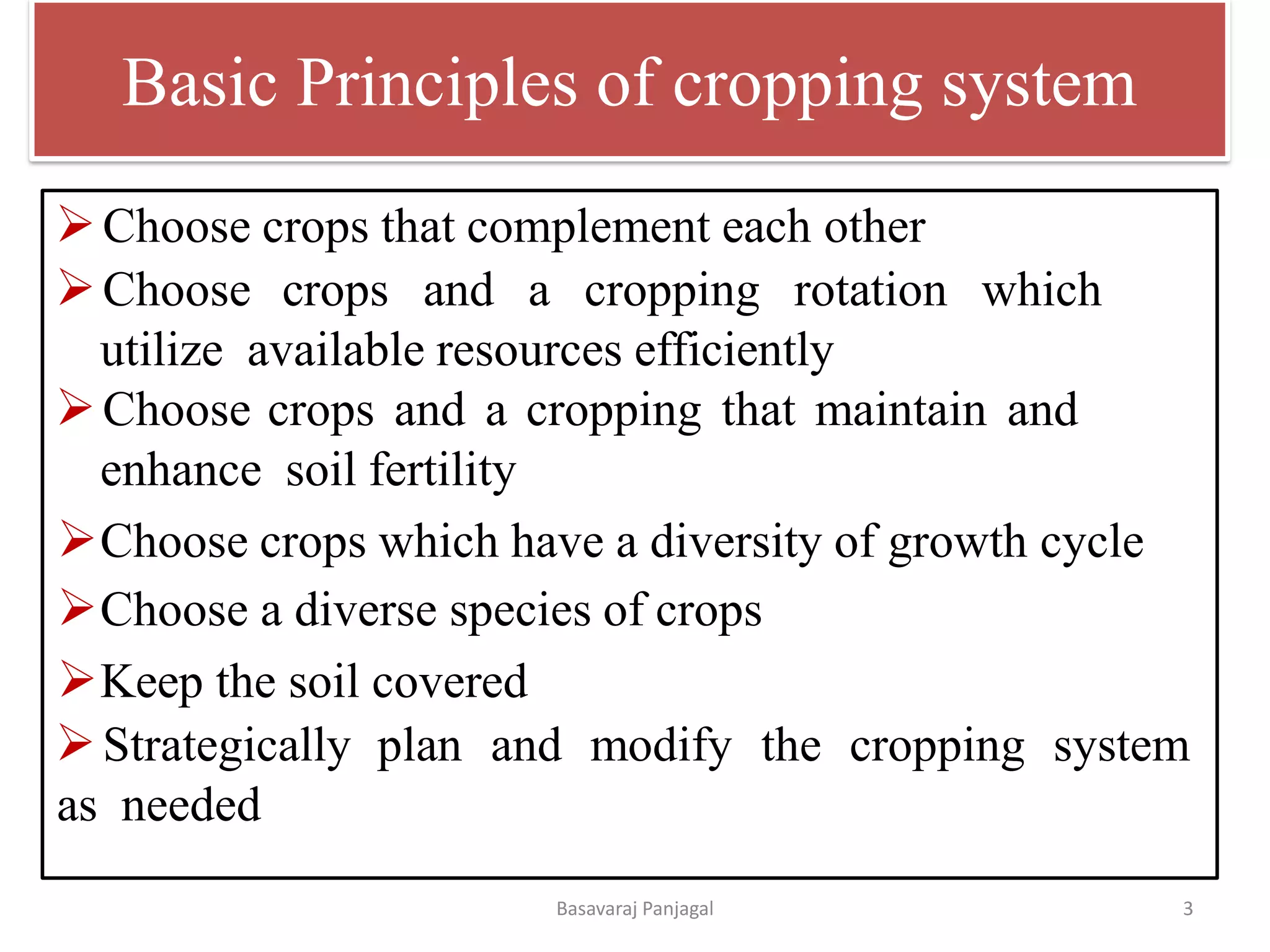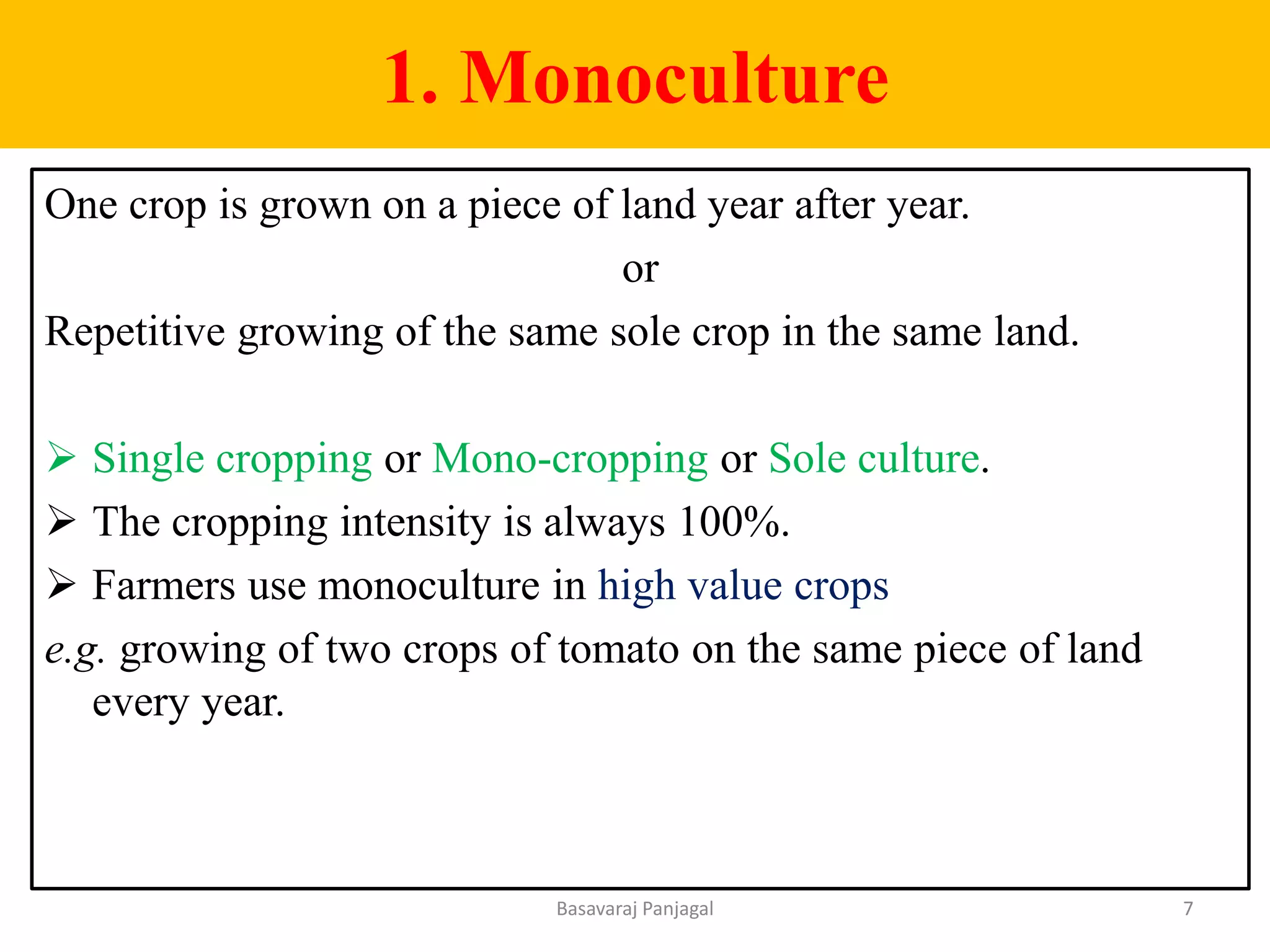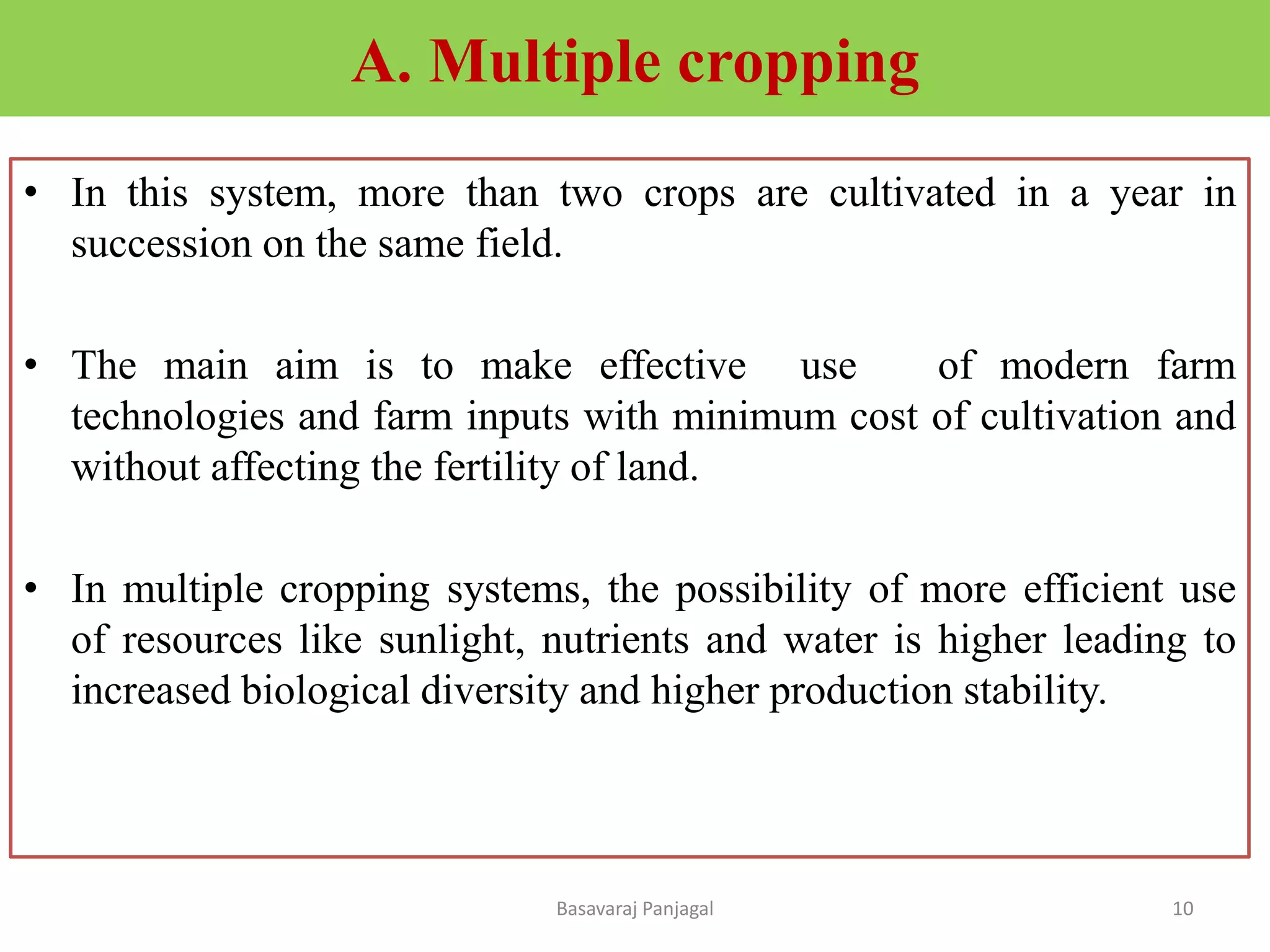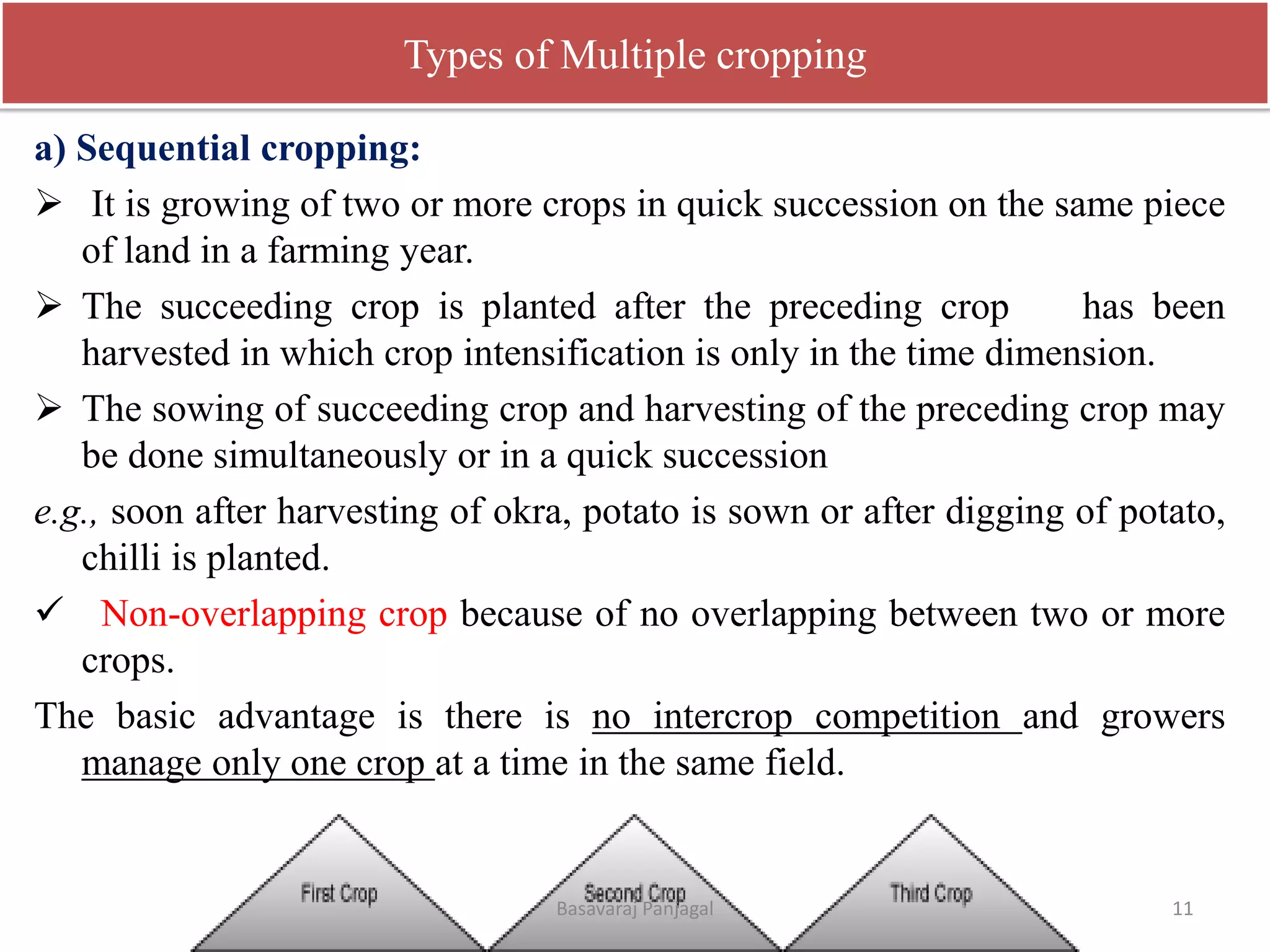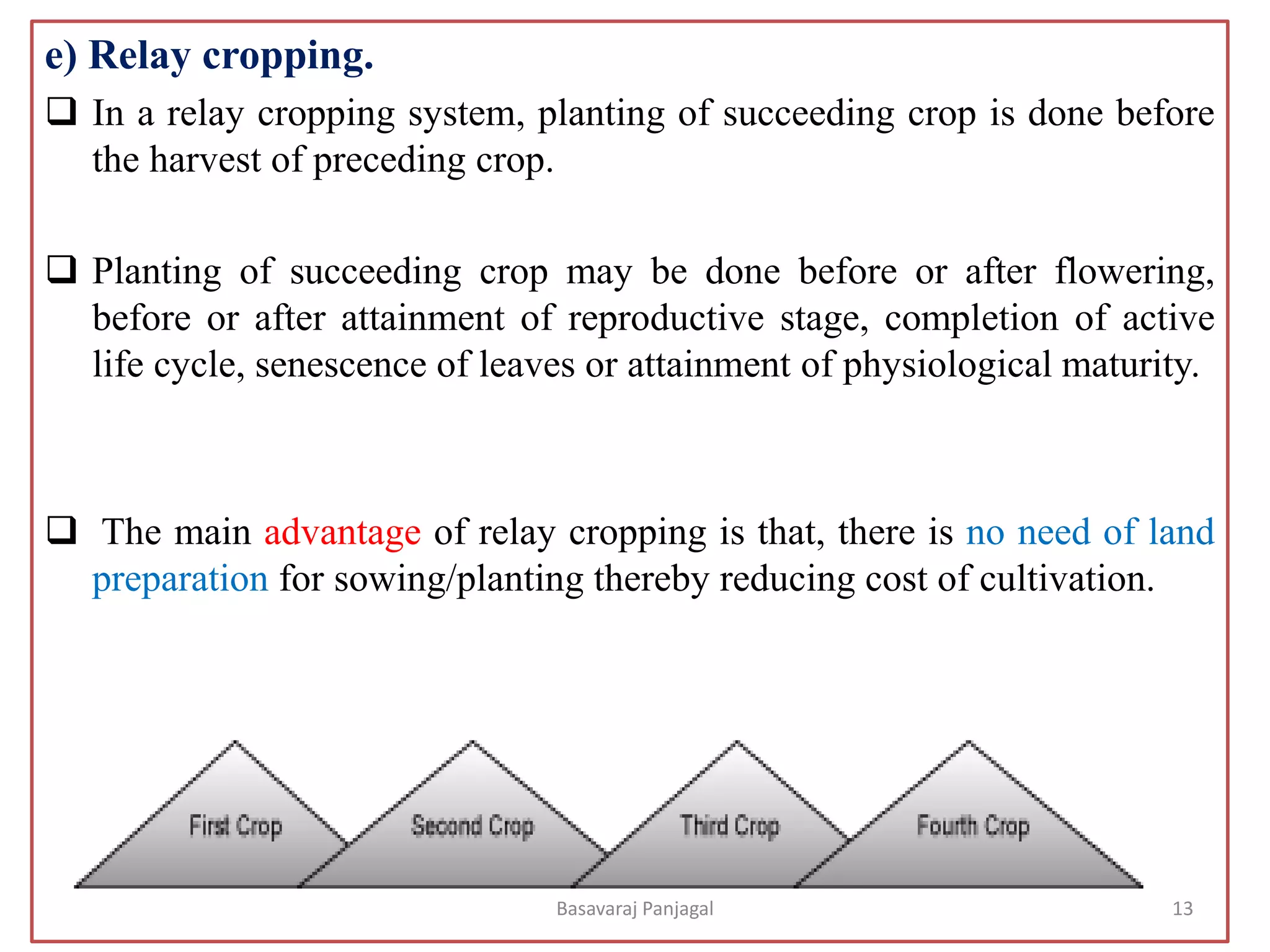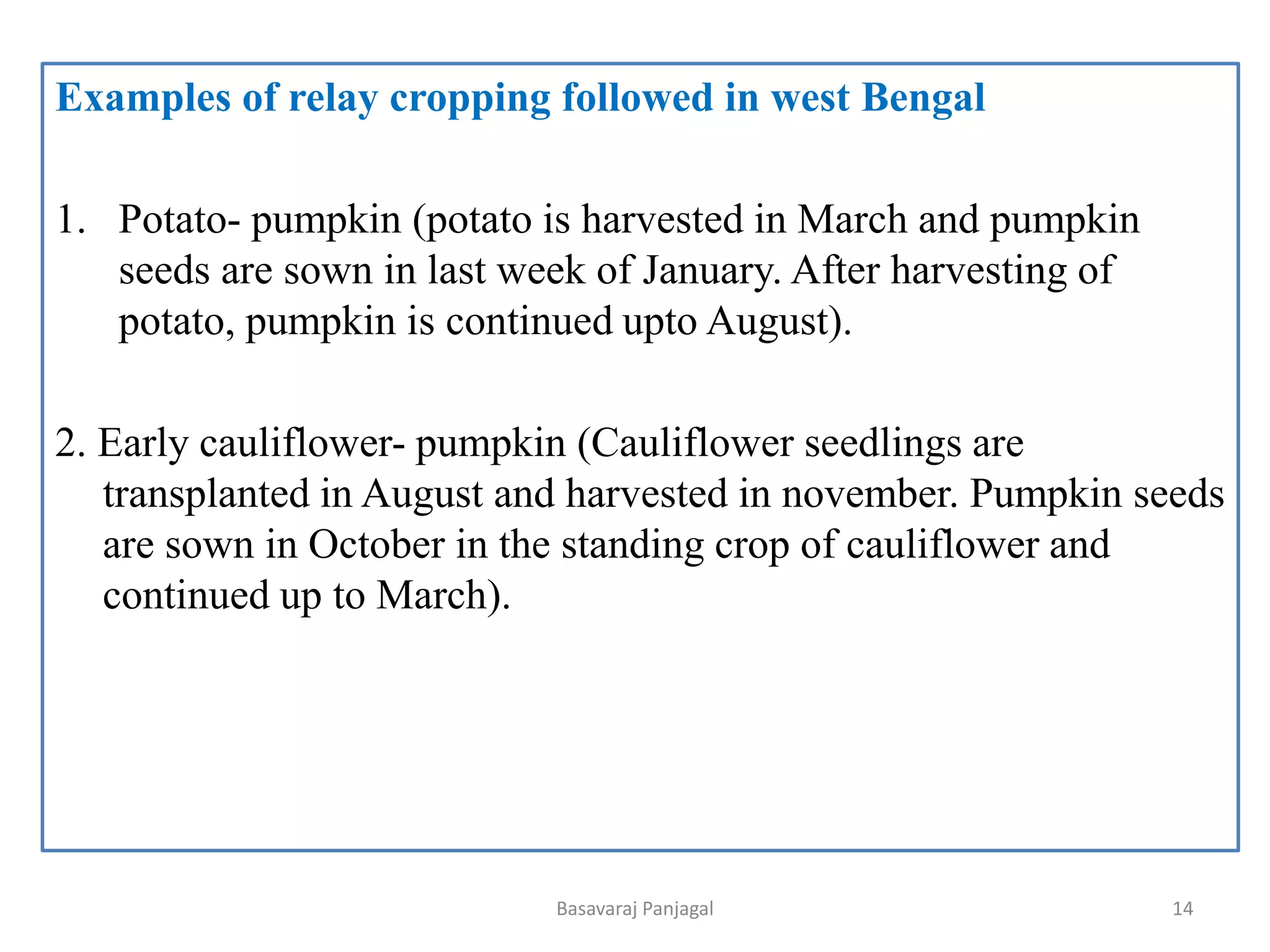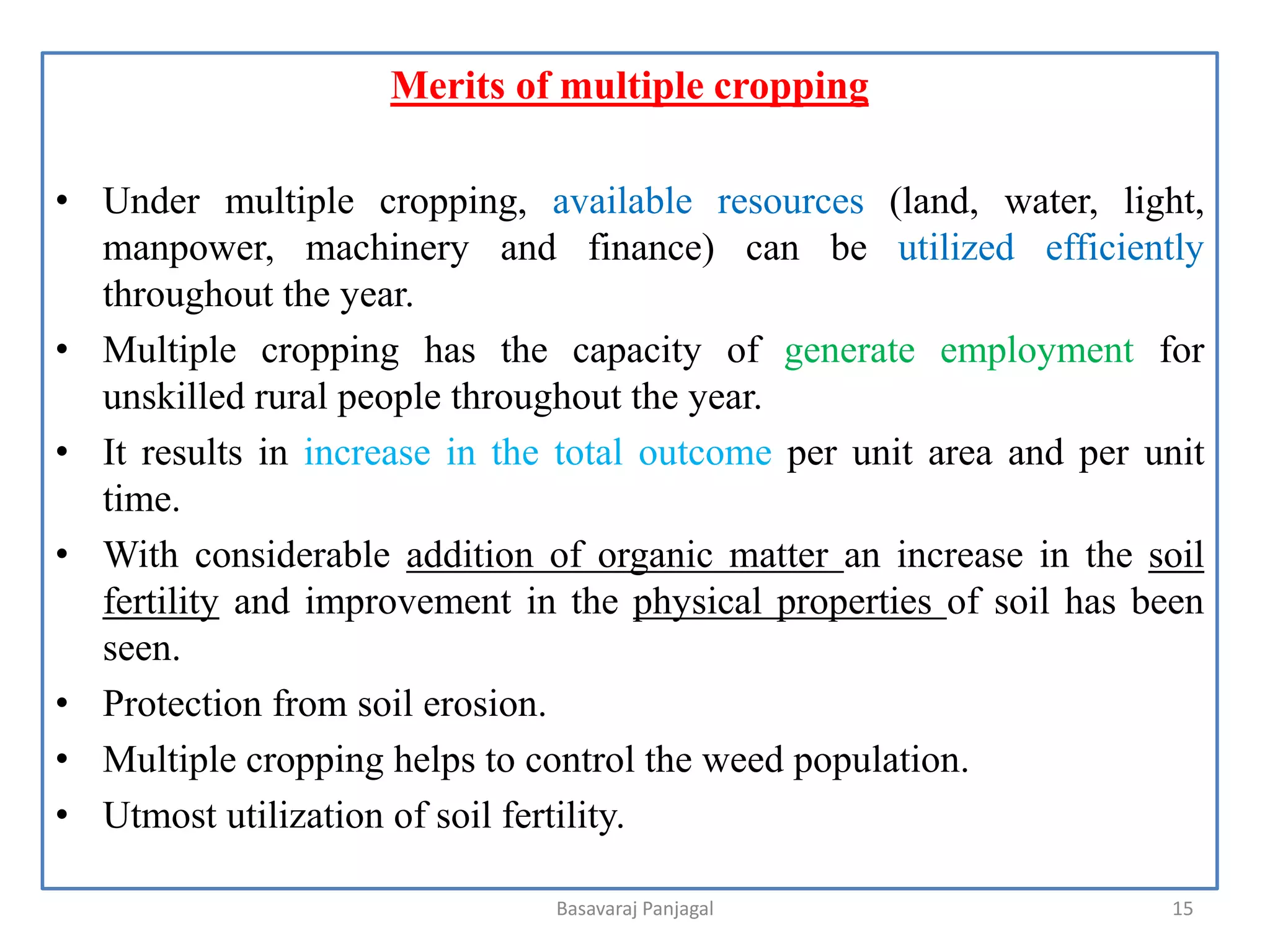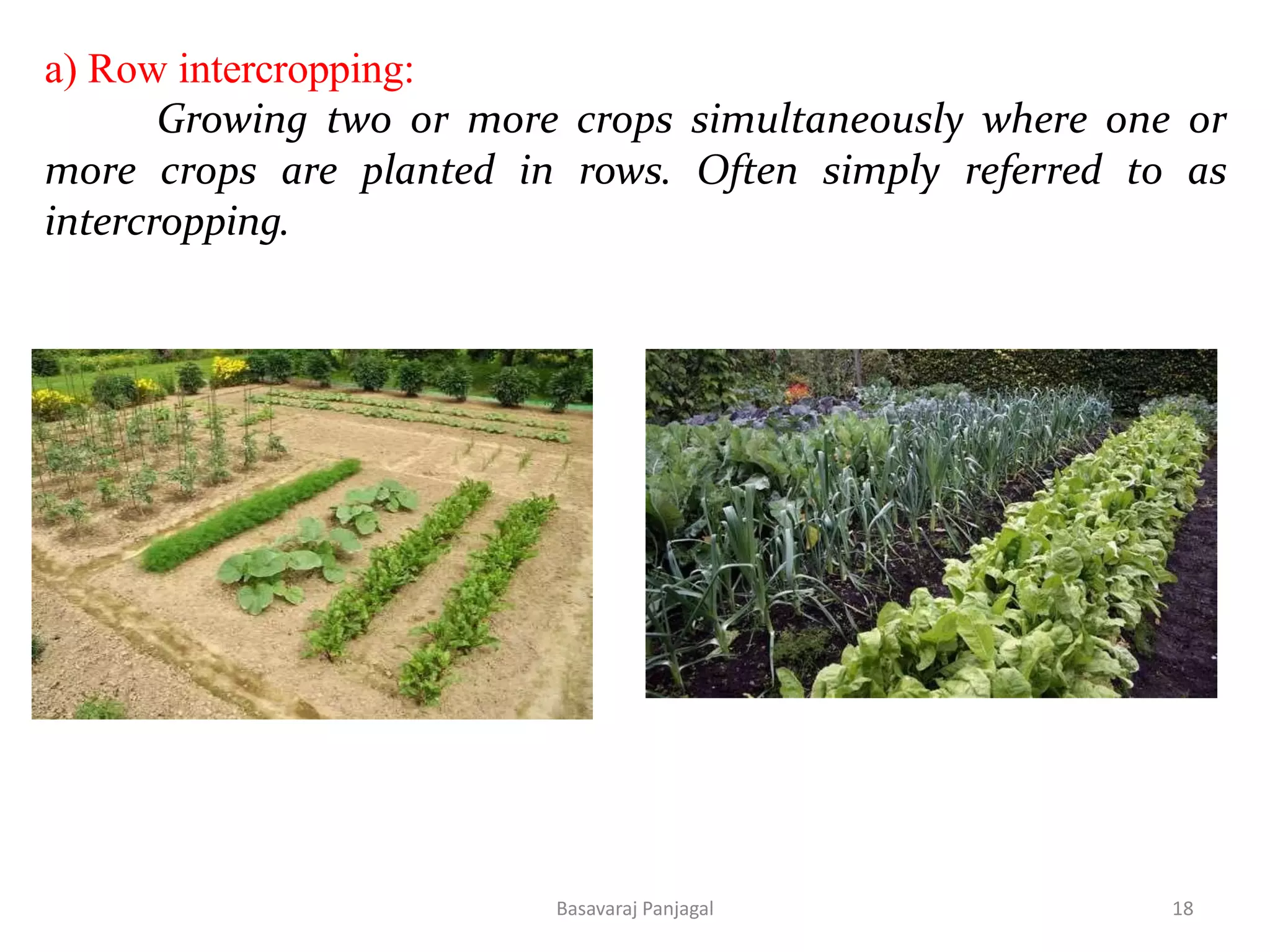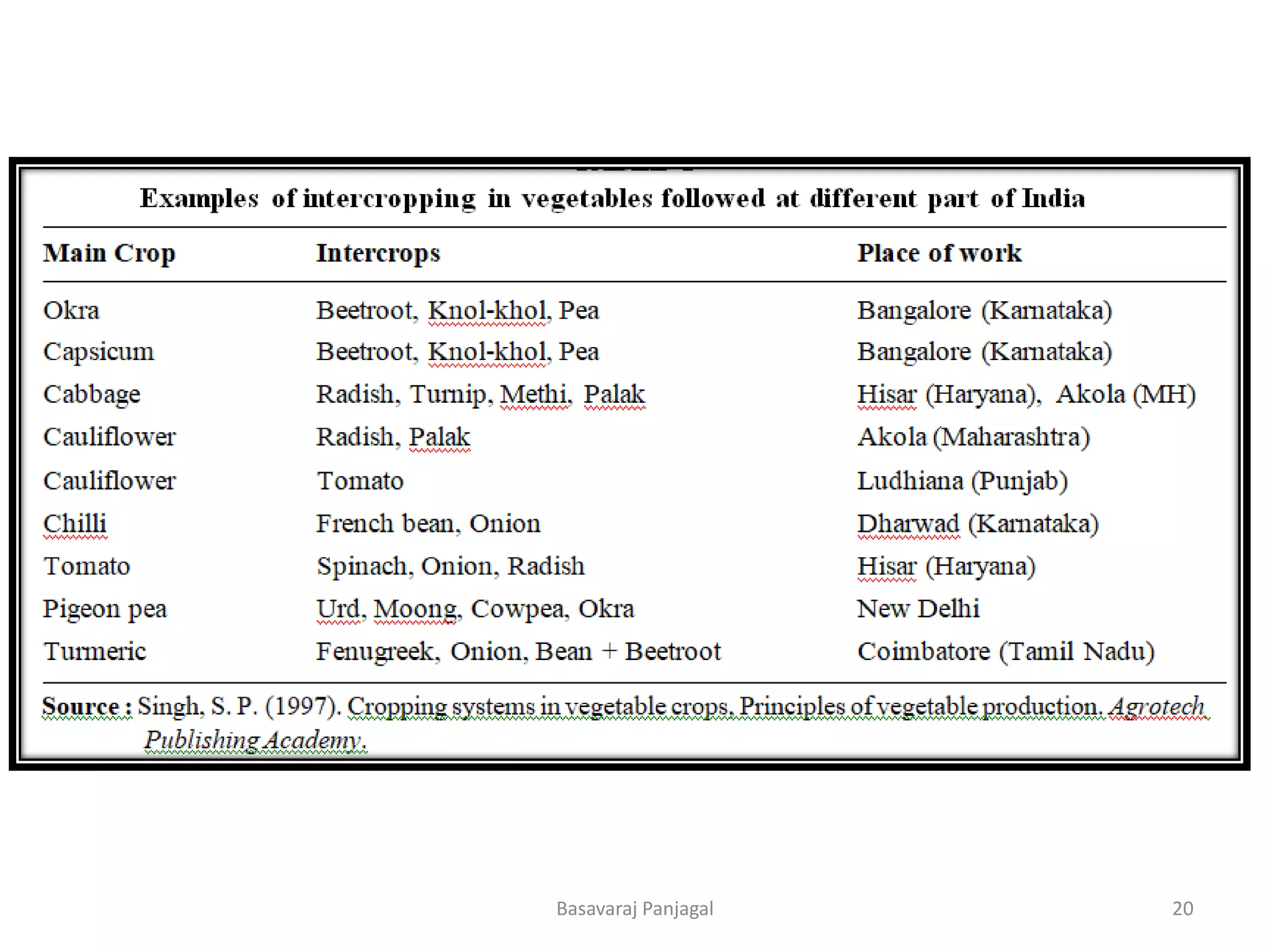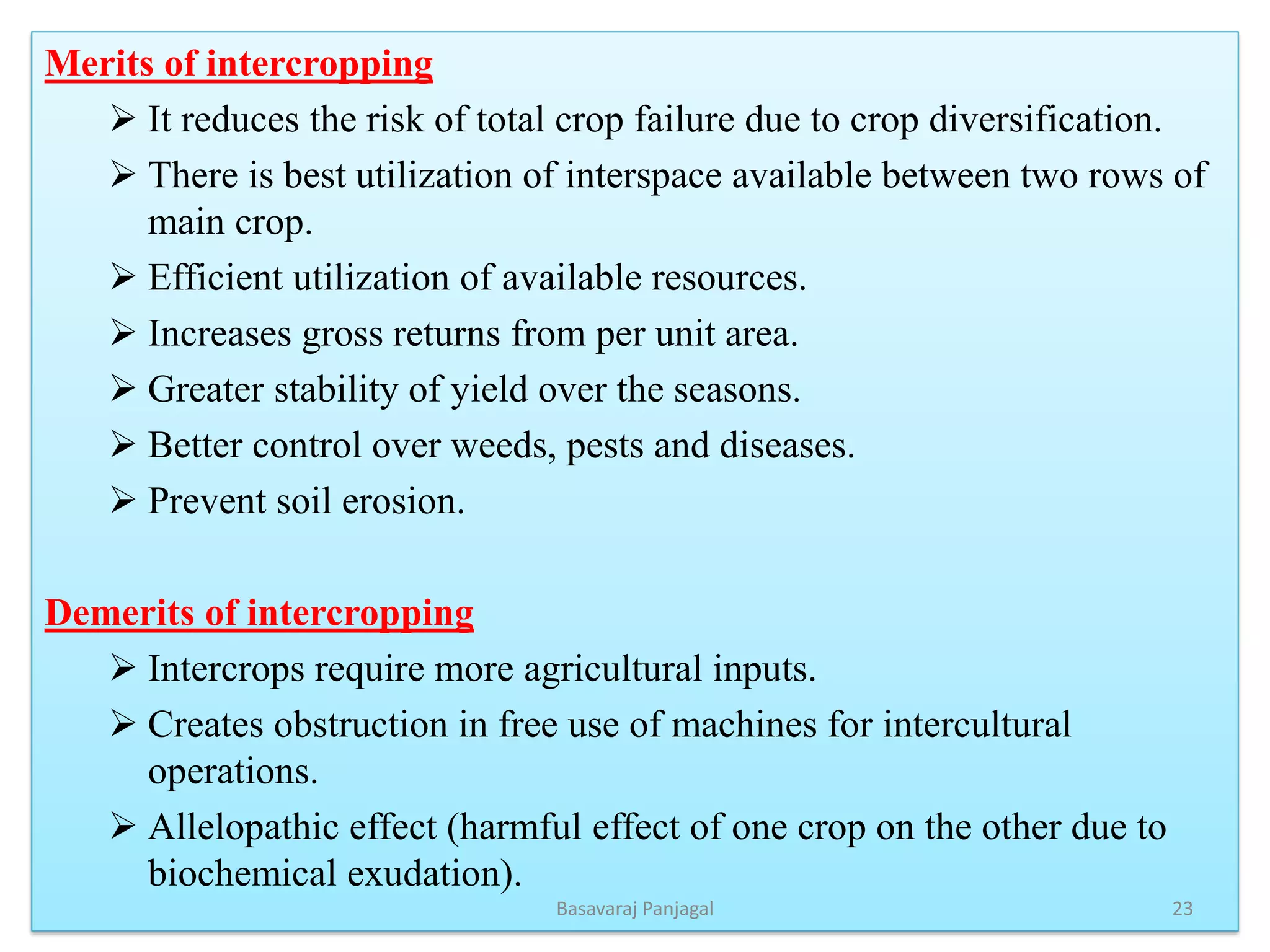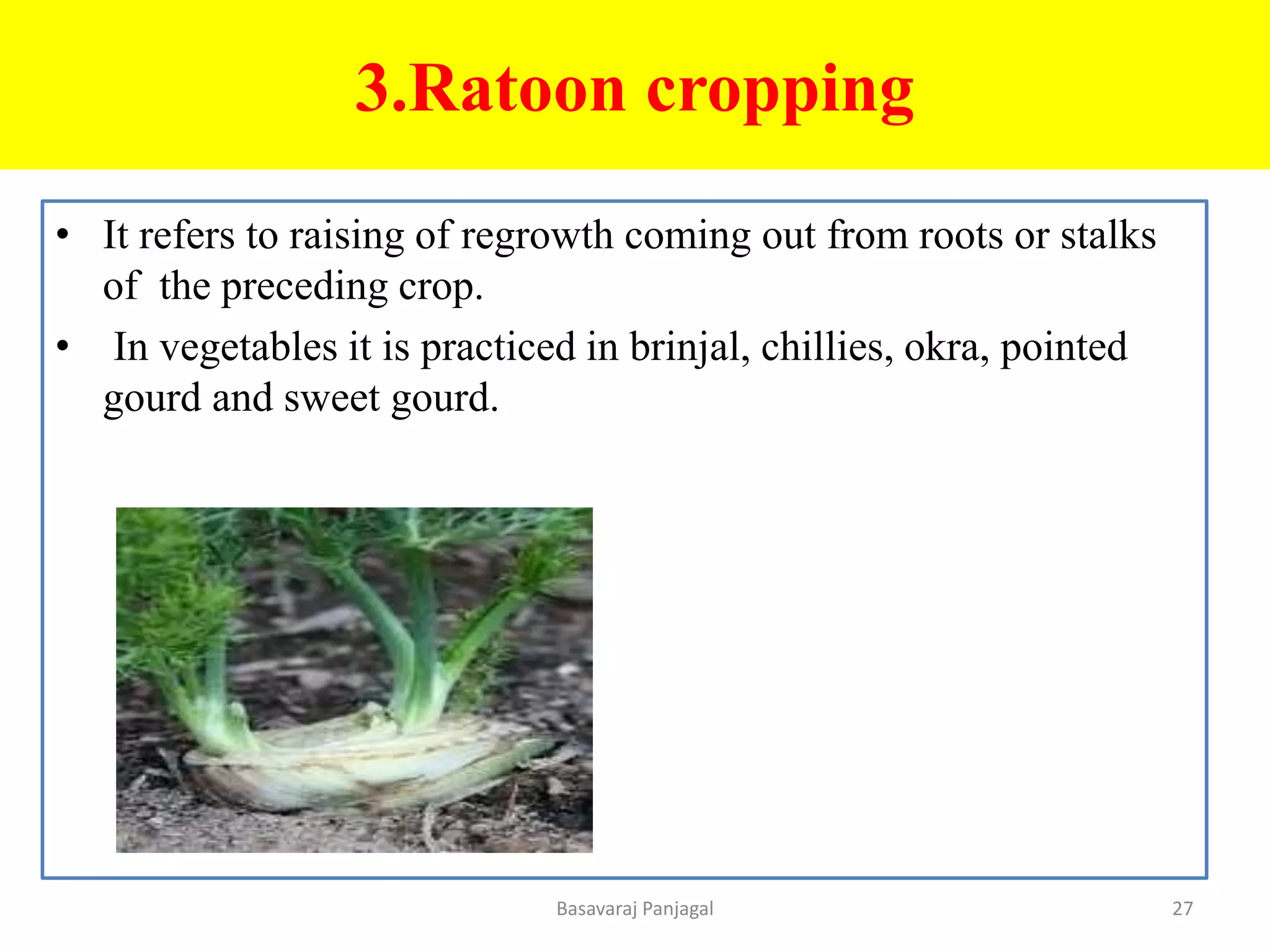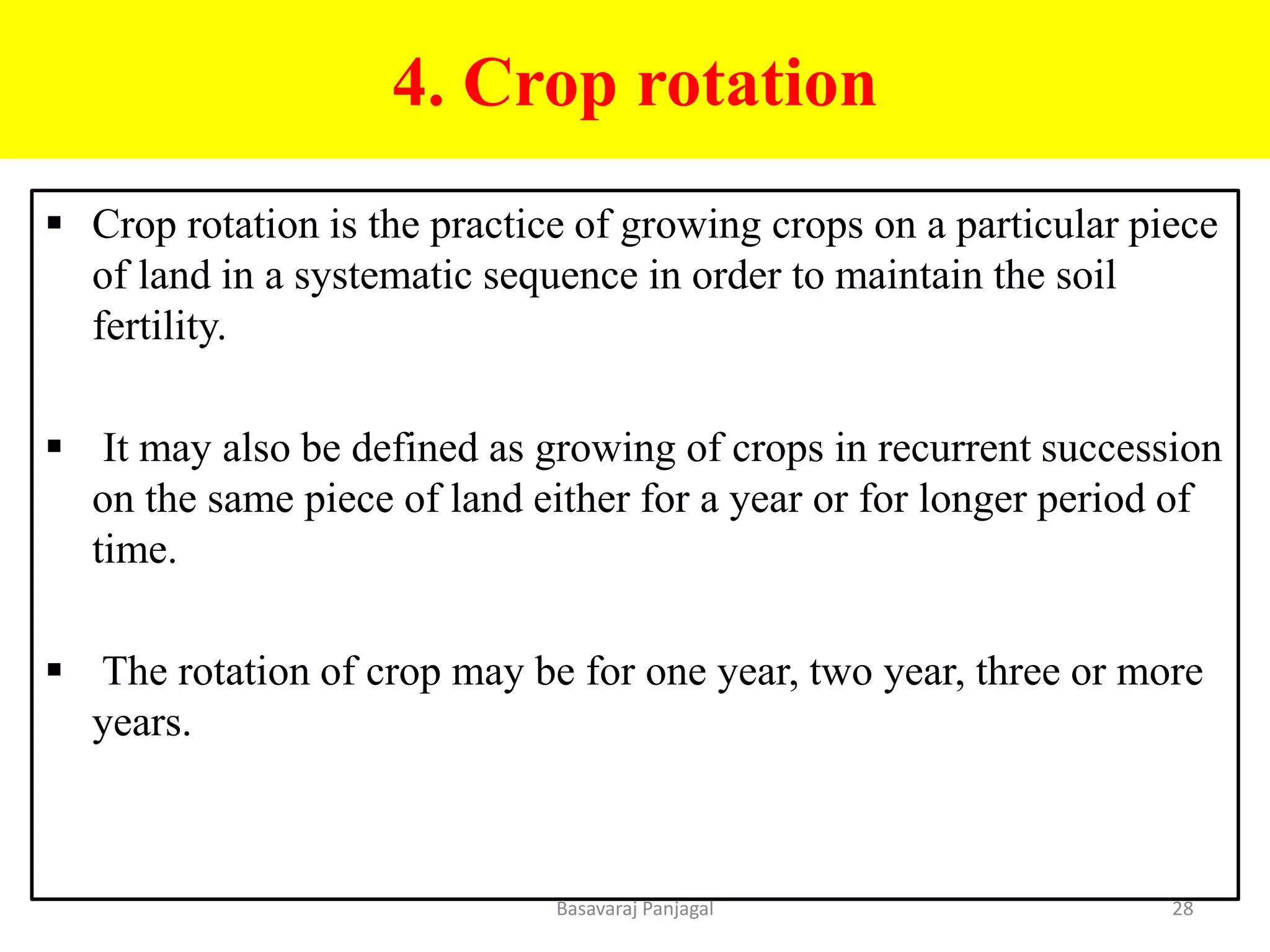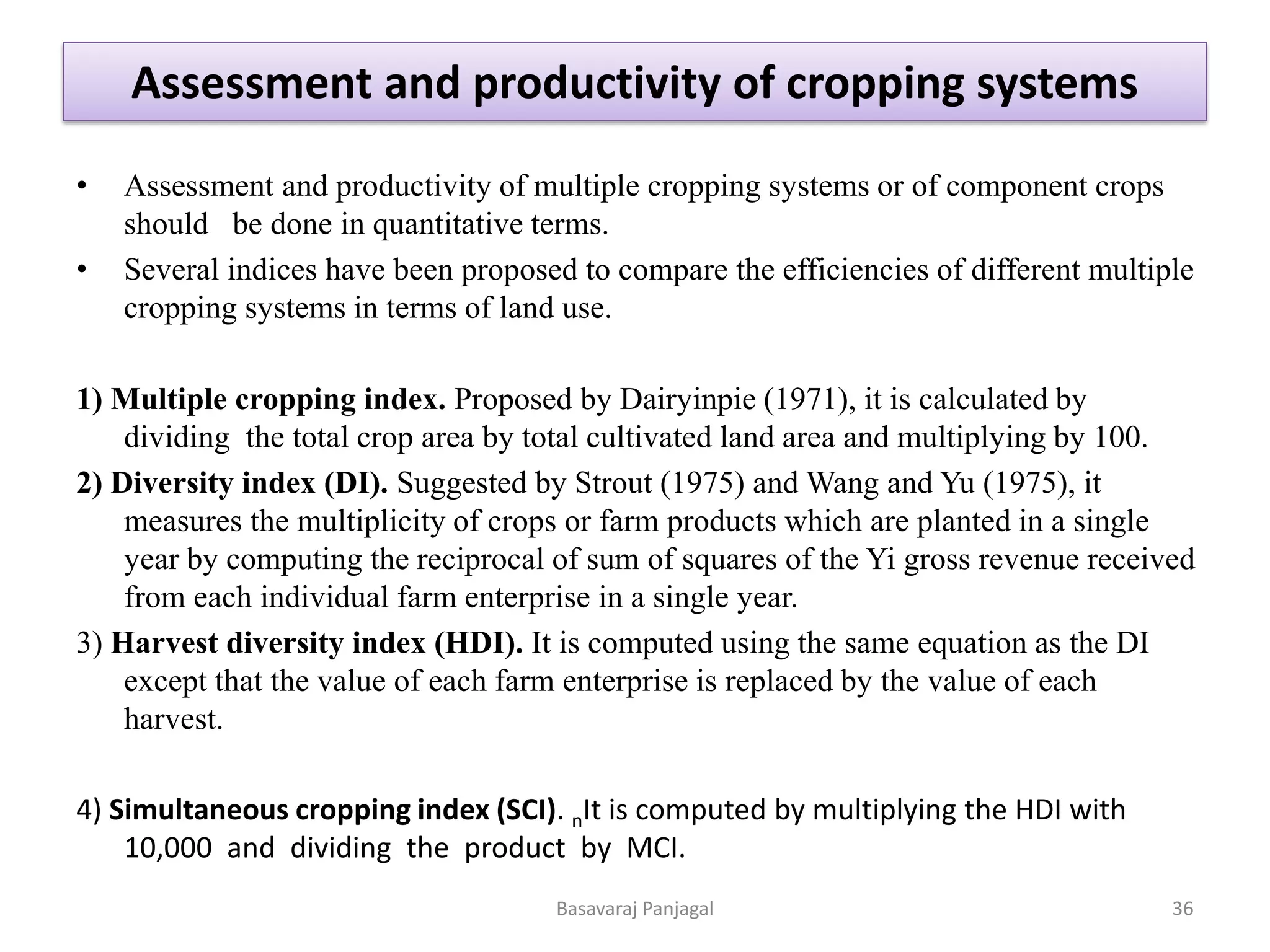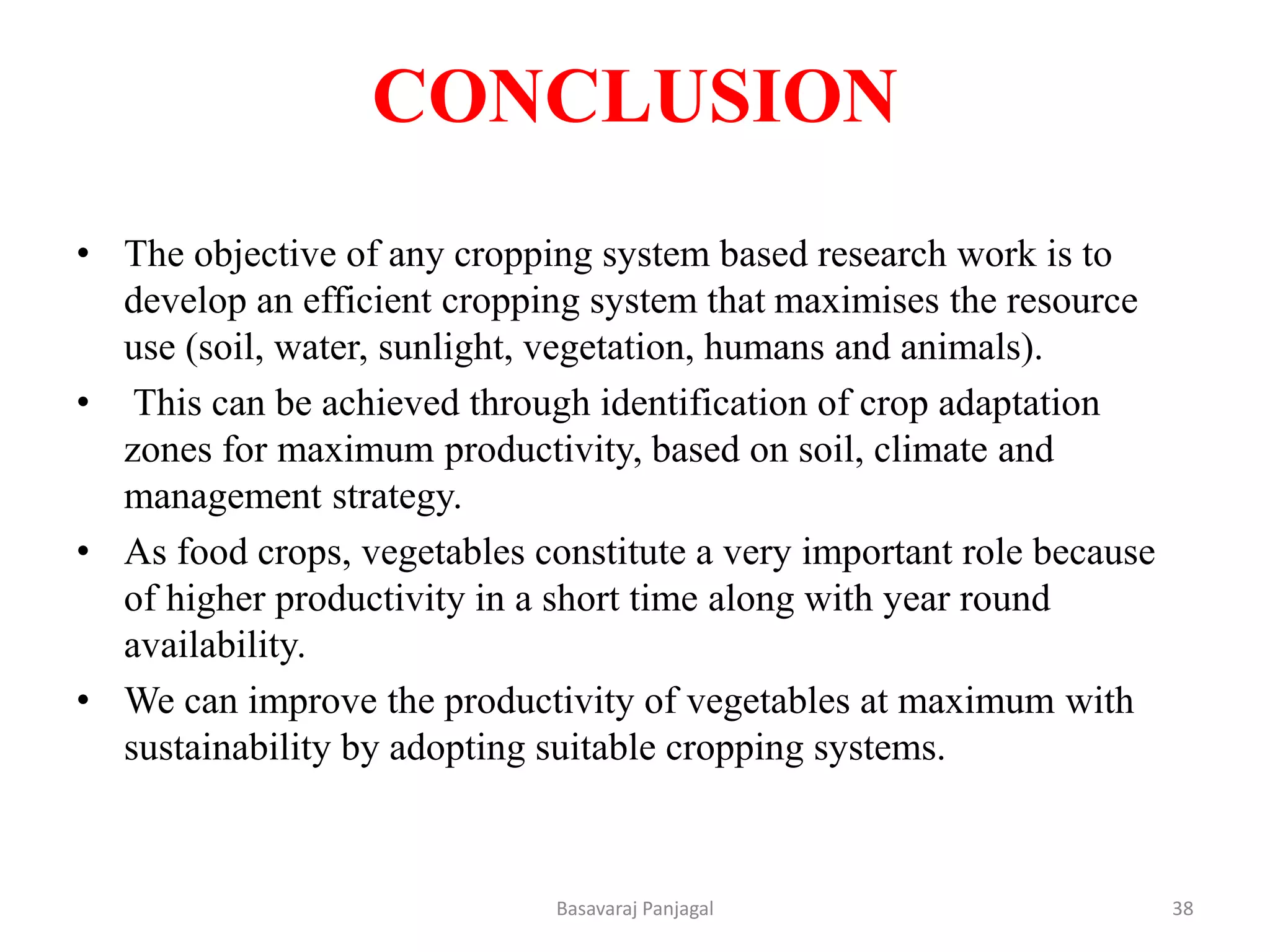This document discusses vegetable-based cropping systems. It begins with definitions of cropping system and cropping pattern. The basic principles of cropping systems are to choose crops that complement each other and utilize resources efficiently. Objectives are efficient resource utilization and maintaining stable production. Benefits include maintaining soil fertility and controlling pests. Cropping systems are classified based on whether one or multiple crops are grown, including sole cropping, multiple cropping, intercropping, mixed cropping, ratoon cropping, and crop rotation. Advantages and disadvantages of each system are provided. Factors that influence the selection of a cropping system are also discussed.


